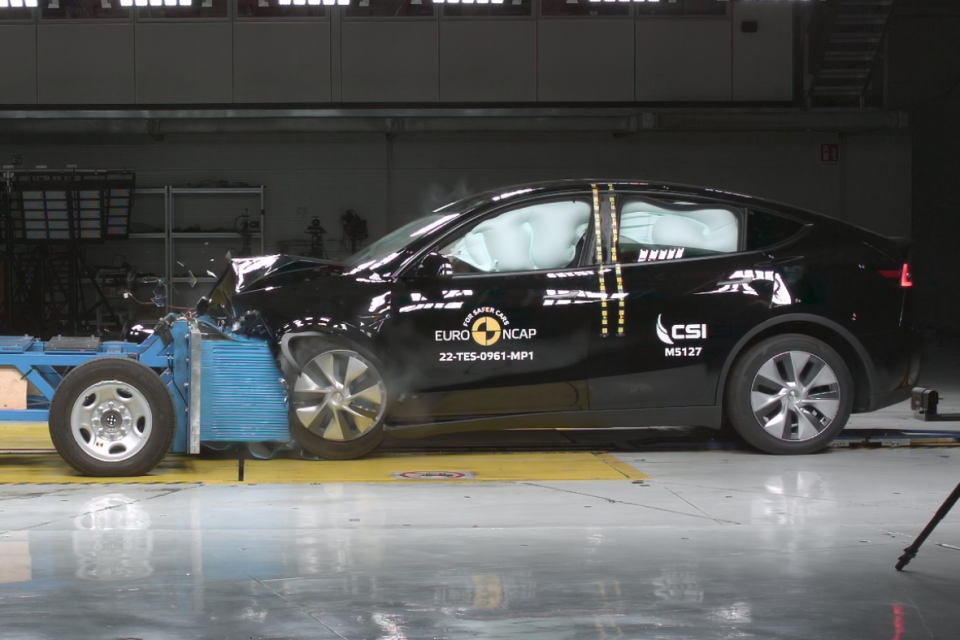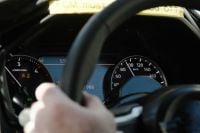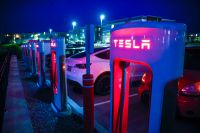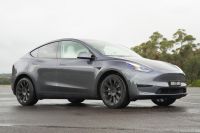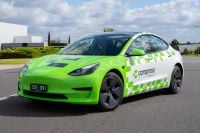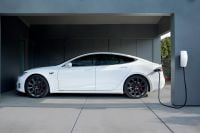
Founder
A Twitter user known for exclusively revealing upcoming Teslafeatures based on code deployed to vehicles in over-the-air updates claims the brand is modifying software within vehicles being supplied to crash testing bodies.
We recently wrote about the Tesla Model Y scoring almost perfect scores for crash testing by European crash testing body Euro NCAP. These results were then followed up with locally-adapted results published by Australian crash testing body ANCAP.
UPDATE 13/10/22, story originally posted 10/09/22: As promised we have an update to this story and as suspected, there is a logical reason why these code changes were made and actually form part of a larger story. You can check out the bigger picture here, or alternatively, we have an update specifically on the code at the bottom of this article.
Tesla followed these results by stating the Model Y is the safest car ever tested by Euro NCAP under its new protocols.
“As part of this assessment, Model Y received the highest Overall Score among any vehicle tested under Euro NCAP’s newest, most stringent test protocol,” the Tesla blog said.
“This was based on an evaluation of Model Y’s ability to protect adults, children and vulnerable road users like cyclists and pedestrians, as well as its safety assistance features.”
Twitter user green has now cast doubt on the validity of the tests, claiming there are provisions within the code of the cars that attach crash body labels to vehicles depending on where they’re being tested.
“Tesla just added ANCAP support in their code. This is in addition to already existing “I VISTA” (Chinese testing grounds), EuroNCAP and Korea NCAP…”
“One wonders why do it (they also give testing houses one-off builds with the testing house in the name (with tweaked settings?) ),” said green.
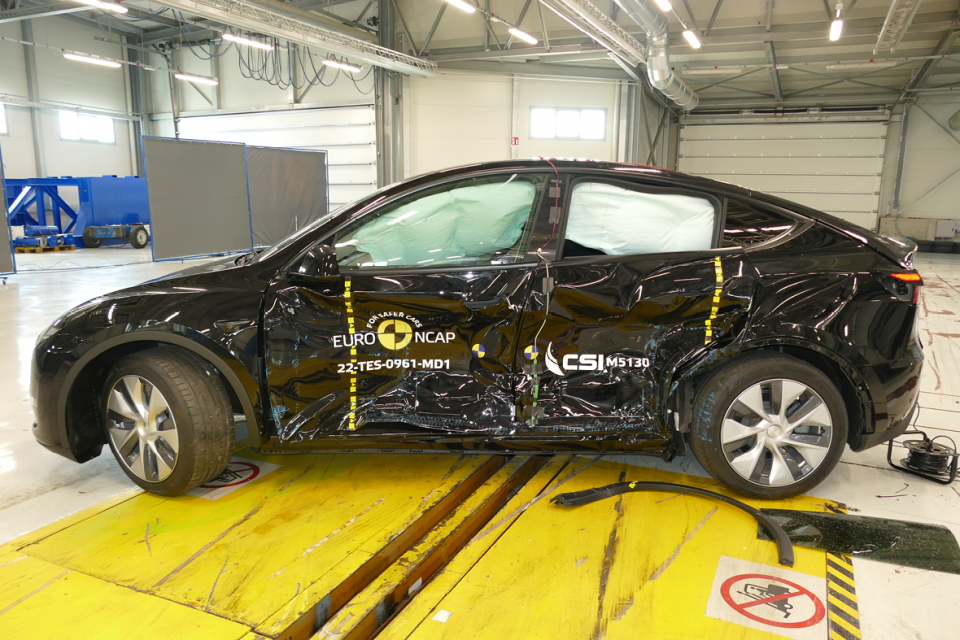
While green couldn’t confirm whether these labels modify any specific functions of the vehicle, the user did confirm Tesla has the ability to geofence certain features, such as FSD Beta for certain regions.
“…they do enable/disable other things based on car location (like disable FSDBeta in Vancouver downtown) so the capability is there,” said green.
We are seeking comment from Euro NCAP and ANCAP to better understand how cars are selected for crash testing and will update this story as more information comes to hand.
In theory there should be no reason cars selected for crash testing are specifically built, or have code flagged for crash testing, if they are meant to be representative of the vehicles being delivered to customers.
UPDATE:
After being contacted by CarExpert, Euro NCAP launched an investigation into why vehicle code was being modified to specifically call out region-specific crash testing bodies.
According to Euro NCAP programme director Aled Williams, the code changes relate to region-specific safety requirements that each vehicle needs to be across to achieve its advertised safety rating.
“With regard to parts of the code referencing particular test programmes (such as ‘euroncap’, ‘ancap’ etc), Euro NCAP is informed that these are used only to identify the region for which the car is configured. Different regions (such as Europe, Australasia etc) differ in terms of legislation as well as road conditions/markings etc,” said Williams.
“For example, a car sold in Europe must recognise the traffic signs that are used there. All production cars have the same code i.e. these references are not found only in test vehicles. The recent addition of ANCAP to the code of Model Y coincides with the start of sales of that vehicle in Australasia.”
When asked whether Tesla used GPS data to identify crash test regions to improve test results during tests, Williams said there was no evidence the additional code did anything malicious to achieve a better test result.
“Euro NCAP has no evidence that Tesla use ‘geofencing’ to identify when they are at test locations and to optimise the performance accordingly. It appears that all vehicles would perform in the same way as the test vehicles if they were to encounter exactly similar situations on the road. To ensure repeatability of its results, and fair comparison between cars, Euro NCAP’s tests are necessarily precisely defined in its protocols. Tests are done on test tracks which cannot exactly replicate real-world situations.
“While it is expected that good performance in Euro NCAP’s tests will lead to equivalent performance in the much broader range of scenarios to which a car will be exposed in the real world, this cannot be guaranteed. Euro NCAP is investigating ways to make its future testing more robust, to ensure test-track performance is, as accurately as possible, an indicator of real-world capability.
“So far, Euro NCAP’s investigations have not revealed any evidence of an attempt to ‘cheat’ the tests by Tesla. The integrity of its star rating scheme is of utmost importance to Euro NCAP and we will continue to do all we can to ensure the rating reflects the safety which consumers can expect from their vehicles.”
Euro NCAP hasn’t been able to verify the contents of the code to ensure there isn’t geofencing or any code that specifically improves the Safety Assist portion of the tests. To avoid any doubt, we have made an offer to Australian test body ANCAP to test a Model Y or 3 obtained by us at a random location to ensure the vehicle tests as it would at a declared test facility.
Trusted Reviews, Smarter Choices, Better Prices
Where expert car reviews meet expert car buying – CarExpert gives you trusted advice, personalised service and real savings on your next new car.
Paul Maric is a CarExpert co-founder and YouTube host, combining engineering expertise with two decades in automotive journalism.
You might also like
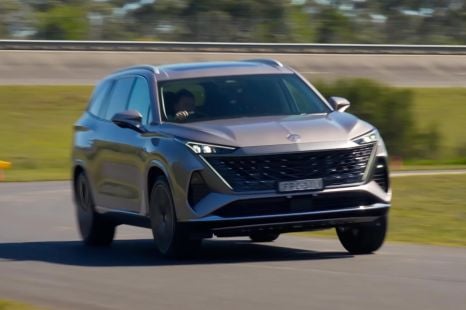

William Stopford
2026 MG QS review
4 Days Ago
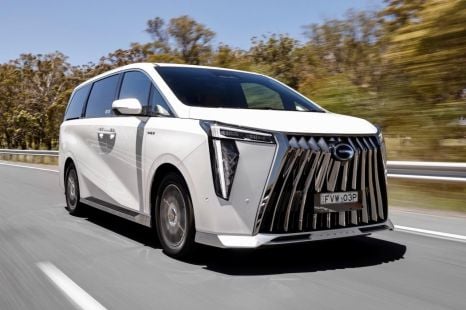

Ben Zachariah
2026 GAC M8 review: Quick drive
3 Days Ago


Ben Zachariah
2026 Toyota HiLux review: Quick drive
2 Days Ago
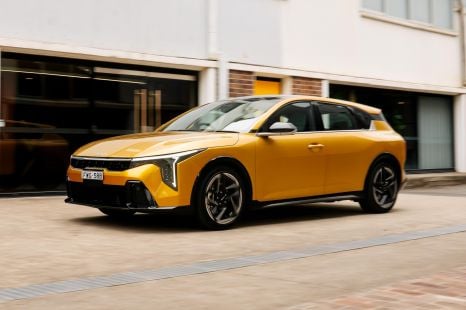

James Wong
2026 Kia K4 review
17 Hours Ago
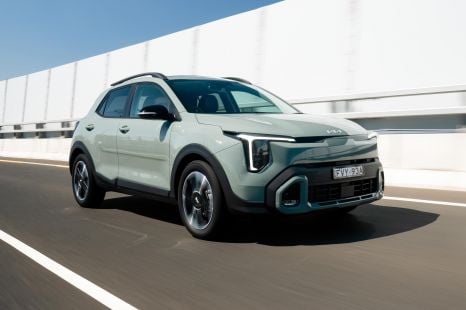

James Wong
2026 Kia Stonic review
17 Hours Ago
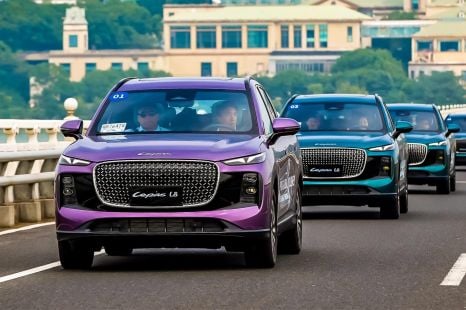

James Wong
2026 Lepas L8 review: Quick drive
10 Hours Ago

